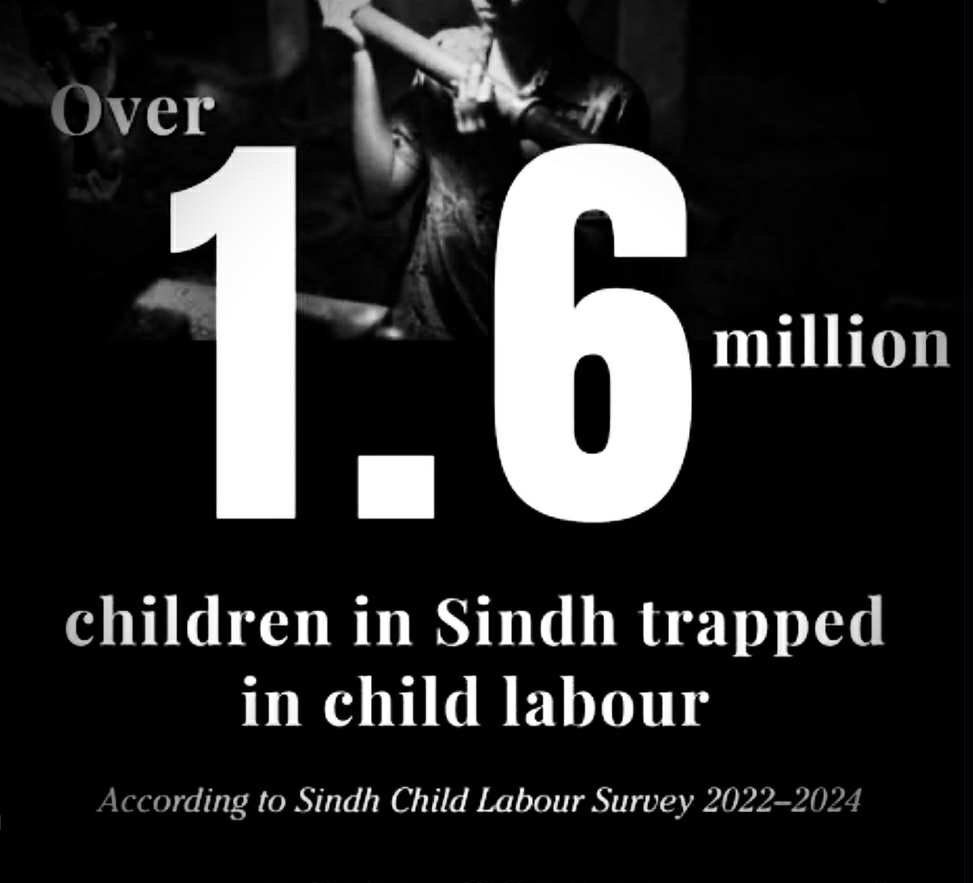Over 1.6 Million Children Still Engaged in Labour Across Sindh Survey Breaks 28 Year Silence
By Ali Raza | Islamabad | August 2, 2025
More than 1.6 million children across Sindh continue to work under hazardous and exploitative conditions, as revealed by the province’s first comprehensive child labour survey in 28 years.
The Sindh Child Labour Survey 2022–2024, conducted by the Sindh Labour Department, in collaboration with UNICEF and the Pakistan Bureau of Statistics, presents a sobering snapshot of the scale of child exploitation in Pakistan’s second-most populous province.
Highest Rates in Rural Sindh
The data shows stark regional disparities. The worst-affected districts are predominantly rural and economically marginalized:
- Qambar Shahdadkot – 30.8%
- Tharparkar – 29%
- Tando Muhammad Khan – 20.3%
- Shikarpur – 20.2%
- Karachi – 2.38% (lowest in the province)
This means that in some districts, nearly one third of children are engaged in labour many of them in environments deemed hazardous or physically demanding.
School attendance among working children remains critically low. According to the report
- Only 40.6% of working children attend school
- Compared to 70.5% among non-working children
The situation is especially dire for girls aged 14–17, who are reported to spend an average of 13.9 hours per week in unpaid household labour. For many, school becomes a luxury they cannot afford.
Mental Health Crisis Among Child Workers
The psychological toll of child labour is equally disturbing.
- 20.1% of working children show signs of depression,
- Nearly twice the rate observed in children who do not work
Mental health specialists warn that early exposure to exploitative labour environments often results in long-term emotional and cognitive harm.
Official Statement: Progress, but Not Enough
Director General Labour Department Sindh, Muhammad Ali Shah, said that the overall incidence of child labour has decreased by around 50% since 1996, the last time such a survey was conducted.
“Despite progress, the situation in several districts remains alarming. Child labour is directly linked to poverty, social exclusion, and lack of access to quality education,” Shah noted.
He emphasized the need for targeted interventions, community outreach, and state-led programs to combat the underlying causes of child labour.

While the report is statistically comprehensive, child rights activists argue it reflects only the tip of the iceberg. Each number is a life a child whose potential is being wasted under the weight of economic survival.




